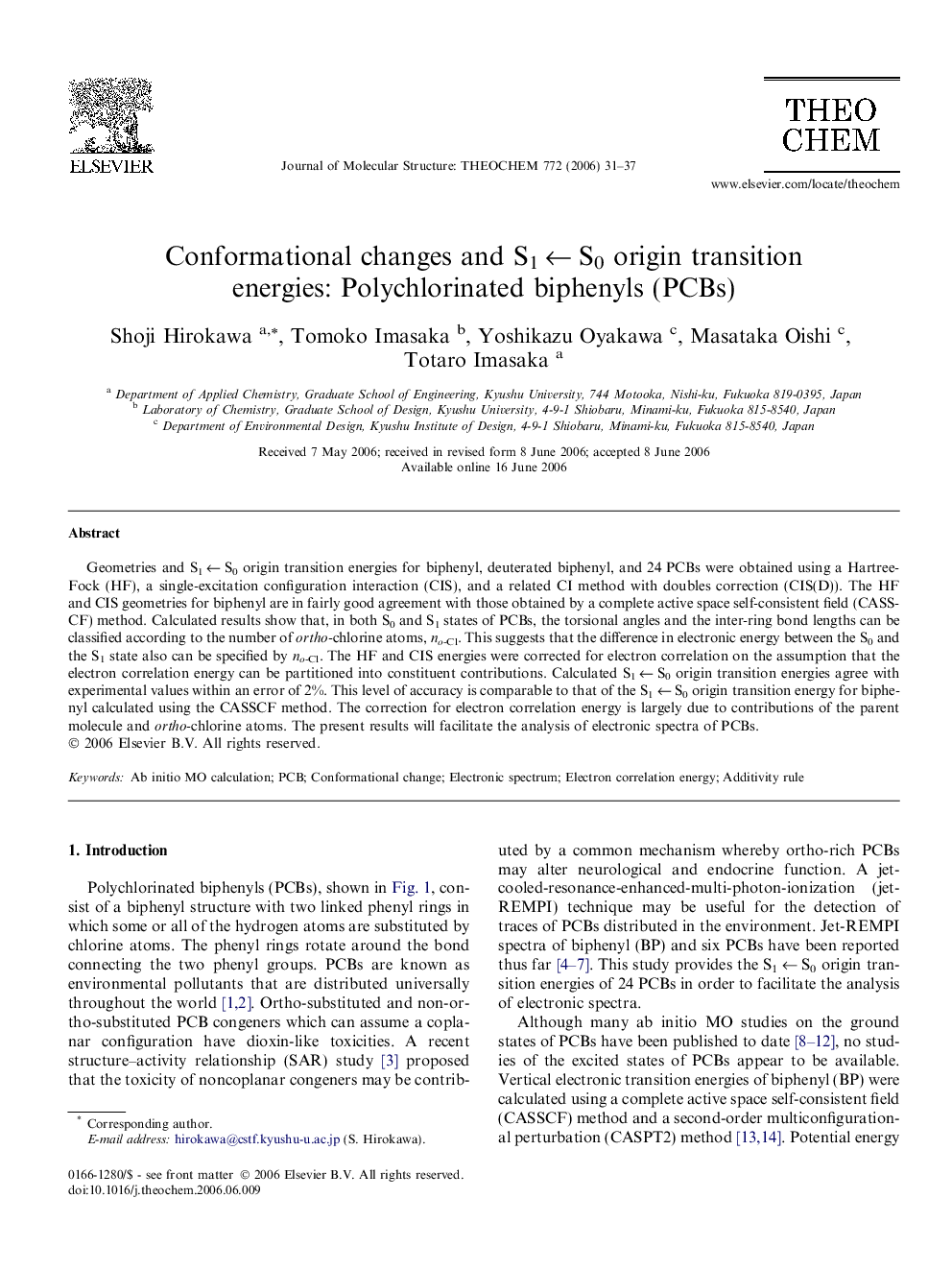| Article ID | Journal | Published Year | Pages | File Type |
|---|---|---|---|---|
| 5419118 | Journal of Molecular Structure: THEOCHEM | 2006 | 7 Pages |
Abstract
Geometries and S1 â S0 origin transition energies for biphenyl, deuterated biphenyl, and 24 PCBs were obtained using a Hartree-Fock (HF), a single-excitation configuration interaction (CIS), and a related CI method with doubles correction (CIS(D)). The HF and CIS geometries for biphenyl are in fairly good agreement with those obtained by a complete active space self-consistent field (CASSCF) method. Calculated results show that, in both S0 and S1 states of PCBs, the torsional angles and the inter-ring bond lengths can be classified according to the number of ortho-chlorine atoms, no-Cl. This suggests that the difference in electronic energy between the S0 and the S1 state also can be specified by no-Cl. The HF and CIS energies were corrected for electron correlation on the assumption that the electron correlation energy can be partitioned into constituent contributions. Calculated S1 â S0 origin transition energies agree with experimental values within an error of 2%. This level of accuracy is comparable to that of the S1 â S0 origin transition energy for biphenyl calculated using the CASSCF method. The correction for electron correlation energy is largely due to contributions of the parent molecule and ortho-chlorine atoms. The present results will facilitate the analysis of electronic spectra of PCBs.
Keywords
Related Topics
Physical Sciences and Engineering
Chemistry
Physical and Theoretical Chemistry
Authors
Shoji Hirokawa, Tomoko Imasaka, Yoshikazu Oyakawa, Masataka Oishi, Totaro Imasaka,
